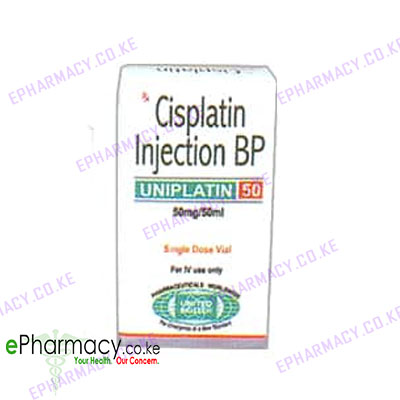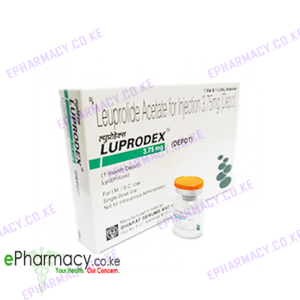Description
Cisplatin is given by intravenous infusion in sodium chloride 0.9% or in a mixture of sodium chloride and glucose. In monotherapy, it is usually given as a single dose of 50 to 120 mg/m2 every 3 to 4 weeks. Alternatively, 15 to 20 mg/m2 is given daily for 5 days, every 3 to 4 weeks. Lower doses are generally used for combination chemotherapy regimens than for single agent therapy; 20 mg/m2 or more is given once every 3 to 4 weeks. A dose of 20 mg/m2 daily for 5 days every 3 to 4 weeks has been used in combination chemotherapy of testicular tumours.
The manufacturers recommend that cisplatin is given in 2 litres of chloride-containing infusion fluid. In practice, volumes of less than 2 litres have been used in expert centres. The infusion may be given over 1 to 2 hours, although licensed product information generally recommends a longer infusion time of 6 to 8 hours in order to reduce renal and gastrointestinal toxicities.
To aid diuresis and protect the kidneys, 37.5 g of mannitol (e.g. 375 mL of mannitol 10%) is usually added to the infusion or is infused separately immediately before cisplatin. In order to begin diuresis the patient is usually hydrated by the infusion of 1 to 2 litres of a suitable fluid over several hours before giving cisplatin. Adequate hydration must also be maintained for up to 24 hours after a dose. Renal, haematological, auditory, and neurological function should be monitored during therapy, and dosage adjusted accordingly.
Adverse Effects and Treatment
Severe nausea and vomiting occur in most patients during treatment with cisplatin; nausea may persist for up to a week.
Serious toxic effects on the kidneys, bone marrow, and ears have been reported in up to about one third of patients given a single dose of cisplatin; the effects are generally dose-related and cumulative.
Damage to the renal tubules may be evident during the second week after a dose of cisplatin and renal function must return to normal before further cisplatin is given. Adequate hydration, and use of osmotic diuretics such as mannitol to increase urine volume and thus decrease the urinary concentration of platinum, can reduce the incidence of nephrotoxicity. Electrolyte disturbances, particularly hypomagnesaemia and hypocalcaemia, may occur, possibly as a result of renal tubular damage. Hyperuricaemia is also seen.
Bone-marrow depression may be severe with higher doses of cisplatin. Nadirs in platelet and leucocyte counts occur between days 18 and 23 and most patients recover by day 39; anaemia is commonly seen and may be partly related to decreased production of erythropoietin following renal damage.
Ototoxicity may be more severe in children. It can manifest as tinnitus, loss of hearing in the high frequency range, and occasionally deafness or vestibular toxicity. Other neurological effects reported include peripheral neuropathies, loss of taste, and seizures. Ocular toxicities include optic neuritis, papilloedema, and cerebral blindness.




Reviews
There are no reviews yet.